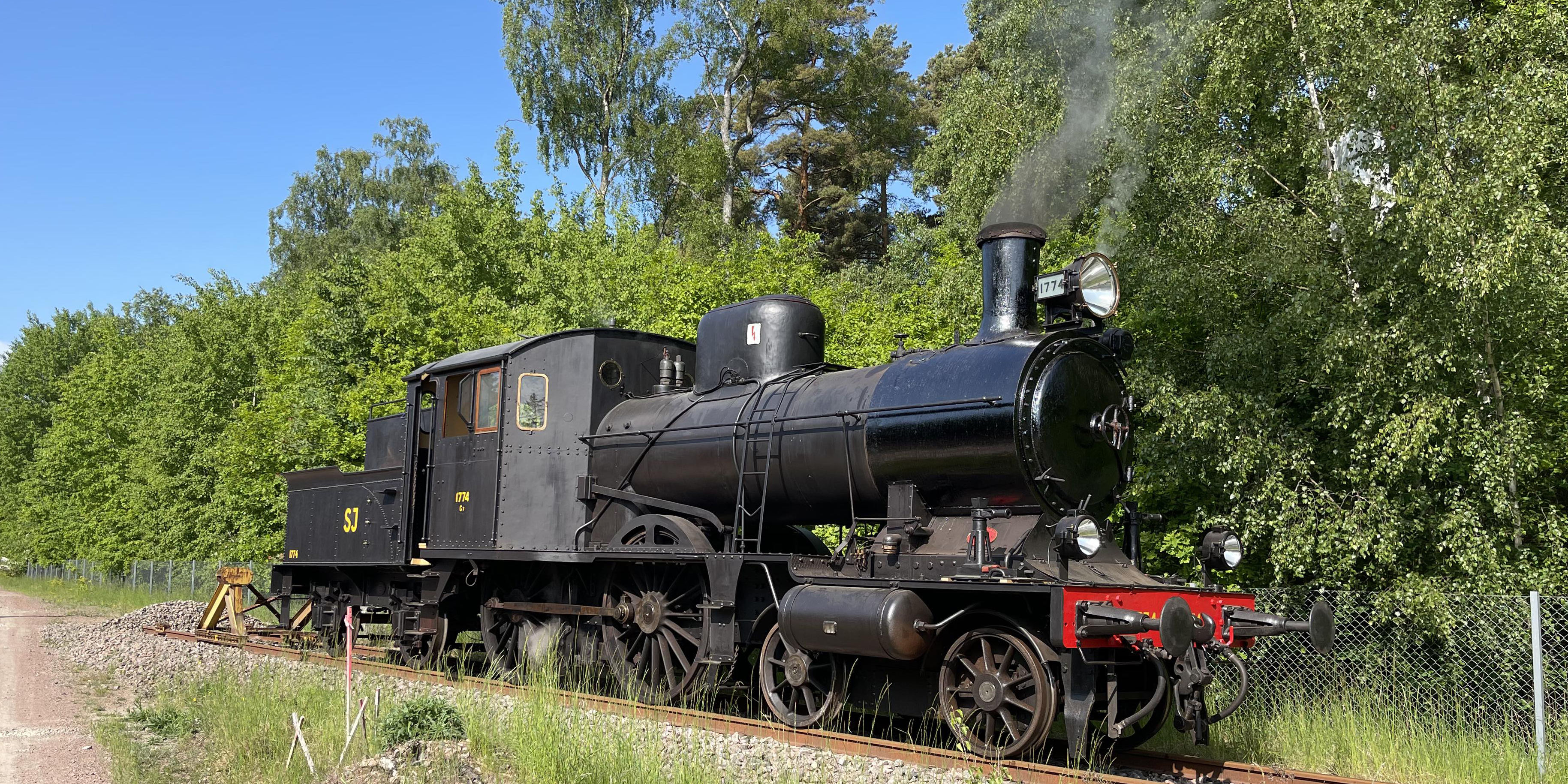
Steam locomotive C7 1774
The Swedish private railways developed completely different models of locomotives than SJ. Bergslagarnes Järnvägar (BJ) from Falun to Gothenburg was the largest company, and their locomotive model A/C/C3 from 1901 was a fast train engine for light and fast trains.
Sweden’s first locomotive with a superheater in the boiler is called BJ C3 52, and is preserved by NOHAB:s ångloksklubb in Trollhättan. The Swedish Railway Museum’s C7 1774 locomotive, which BJ gave the designation 51, is from the same production series.
The locomotives became obsolete in the 1930s and locomotive 51 was sold to Nässjö-Oskarshamns Järnväg (NOJ) in 1941, where it was renamed 37. It was used in passenger trains and also for pushing heavy trains on inclines from Eksjö to Nässjö.
Where the locomotive went when NOJ was taken over by SJ in 1946 is shrouded in mystery. SJ probably considered the locomotive, now called C7 1774, as odd and a bit too weak. It was taken out of service as early as 1953, and from 1955 was designated an emergency locomotive for use in a crisis situation. It was initially parked in the Eslöv locomotive stable and later in the Loshult locomotive shed.
When the local heritage association Hultsfreds Hembygdsförening wanted a former NOJ locomotive for their local heritage park, they were offered this particular locomotive. It arrived there in 1962, with the Swedish Railway Museum as owner.
The locomotive did quite well under its roof in Hultsfred, but came back to the Swedish Railway Museum in 2009. It has been restored to running condition by the Friends of Swedish Railway Museum association in Ängelholm and put back into operation in 2023.
The locomotive has been restored to the condition it had after an overhaul in 1949 and represents a non-typical locomotive for SJ, originating from a private railway.
Manufactured
Nydqvist & Holm, Trollhättan, 1904
Length
14.5 metres
Weight
61.9 tonnes
Tractive effort
5.7 tonnes or about 650 hp
Maximum permitted speed
90 km/h